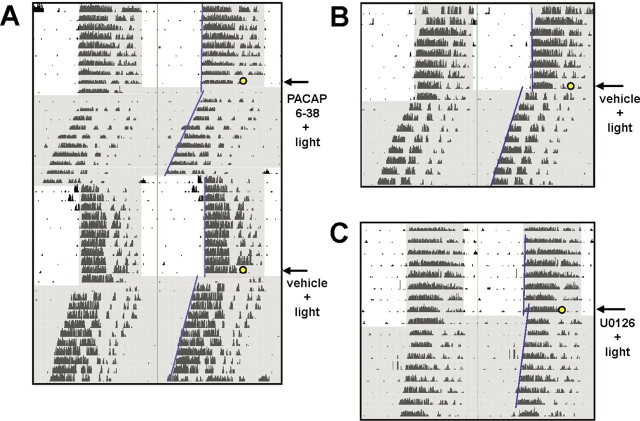Figure 2.
The enhanced late-night photic responsiveness of dexras1−/− mice is dependent on PAC1 receptor and p42/p44 MAPK activity. A, A representative actogram of wheel-running activity of dexras1−/− mice. Mice were entrained to a 12 h LD schedule (400 lux). Thirty minutes before a 15 min light pulse of 40 lux at ZT 20 (yellow circle), mice were infused with the PAC1 antagonist PACAP 6–38 (500 μm; 3 μl) via a guide cannula positioned in the third ventricle. Subsequent to the light pulse, animals were maintained in DD for at least 7 d. Animals were re-entrained, and the procedure was repeated for the counterbalanced treatment: vehicle infusion plus light pulse. Periods of darkness are shaded in gray. Activity onsets are indicated by blue lines. B, C, Representative actograms of wheel-running activity of dexras1−/− mice. Mice were entrained to a 12 h LD schedule (400 lux). Thirty minutes before a 15 min light pulse of 40 lux at ZT 20 (yellow circle), mice were infused with vehicle (DMSO) (B) or the MEK1/2 inhibitor U0126 (10 mm; 3 μl) (C) via a guide cannula located in the third ventricle. Subsequent to the light pulse, animals were maintained in DD for at least 7 d.

